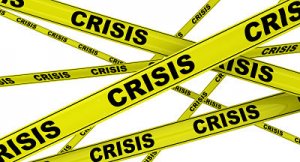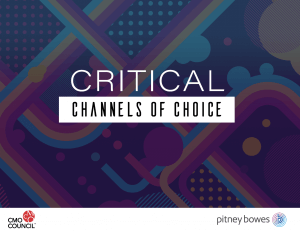You didn’t get there on your own
September 16, 2020
One of the contributors to every organization’s success is the business partners that come alongside us to serve our clients better. Most businesses are reasonably good at showing their appreciation for customers. But the vendors who often save the day don’t always get showered with the thanks they deserve.
 One of the truths of being in business is that sooner or later our clients get in a jam and we have the opportunity to save the day for them. But we rarely do that without an assist. I think in those moments, we probably gush with praise. As we should. But in the calm of “normal” workdays, our business partners are often the unsung heroes.
One of the truths of being in business is that sooner or later our clients get in a jam and we have the opportunity to save the day for them. But we rarely do that without an assist. I think in those moments, we probably gush with praise. As we should. But in the calm of “normal” workdays, our business partners are often the unsung heroes.
Harvard Business School and Wharton published research that shows that expressing your gratitude can result in a huge spike in a vendor or partner’s investment and willingness to help your business when you are in a jam. And if there is a given, it’s that we’re going to be presented with the opportunity to help a client navigate their way out of a mess.
I’ve seen some really wonderful ways that businesses express their gratitude to those save the day partners. But the common thread that connects all of them is that they’re intentional and calendared. If we don’t assign it that level of importance, it will get lost in the chaos of our day.
The suggestions below are not new ideas. And you’ve probably done some of all of them once or twice. What I am suggesting is that you magnify that occasional burst of gratitude by systemizing them. Which one of these, or a variation of one, would work for your organization?
Send your thanks up the chain: When someone at one of your partner companies goes above and beyond, don’t just thank them, send a note (not an email) or letter, celebrating what their teammate did. Let them know that the extra effort is what you value most about your work with their company and how it has earned your confidence and loyalty.
What if you identified one partner a month to celebrate with a letter to their boss? Get it on your calendar, so it actually happens.
Create connections: There isn’t a business you work with that isn’t looking for new customers. If they’ve been a rock star for you, odds are they can deliver that same level of service to other businesses in your network.
Do you send out a monthly newsletter? Or hold a holiday party for clients and prospects? Why not spotlight a vendor who is worthy of some extra praise?
Invite them in: One of the most impressive ways to thank a good business partner is to be a better customer. Why not ask your best vendors to help you refine the way you work with them? I’m guessing they have some pretty interesting ideas that will help you bring even more value to your customers, make your processes smoother, and elevate your product or services.
This could be a monthly or quarterly initiative. Ask your team who has demonstrated a depth of expertise that you could tap into and invite them in. This collaborative brainstorming will make your company better and deepen the relationship you have with that partner.
We should thank our vendors because it’s the right thing to do. But if you need more incentive, just remember that there’s another jam around the corner, and our business partners can be our best referral sources.
Gratitude can be your business’ superpower when it’s heartfelt and shared liberally. Give it a go.
This was originally published in the Des Moines Business Record, as one of Drew’s weekly columns.
More




 It’s official – Physical and digital engagement is paramount for effective customer engagement. No matter what age, gender or location, consumers around the world agree that when it comes to brand interactions, personal, trusted and reliable omnichannel engagement is THE preferred option and choice.
It’s official – Physical and digital engagement is paramount for effective customer engagement. No matter what age, gender or location, consumers around the world agree that when it comes to brand interactions, personal, trusted and reliable omnichannel engagement is THE preferred option and choice. 

 No matter what you do for a living, you have customers. And odds are you want more of them. But every customer is not equally valuable to your business. And every potential customer out there does not want to buy what you sell or buy it from you.
No matter what you do for a living, you have customers. And odds are you want more of them. But every customer is not equally valuable to your business. And every potential customer out there does not want to buy what you sell or buy it from you.
